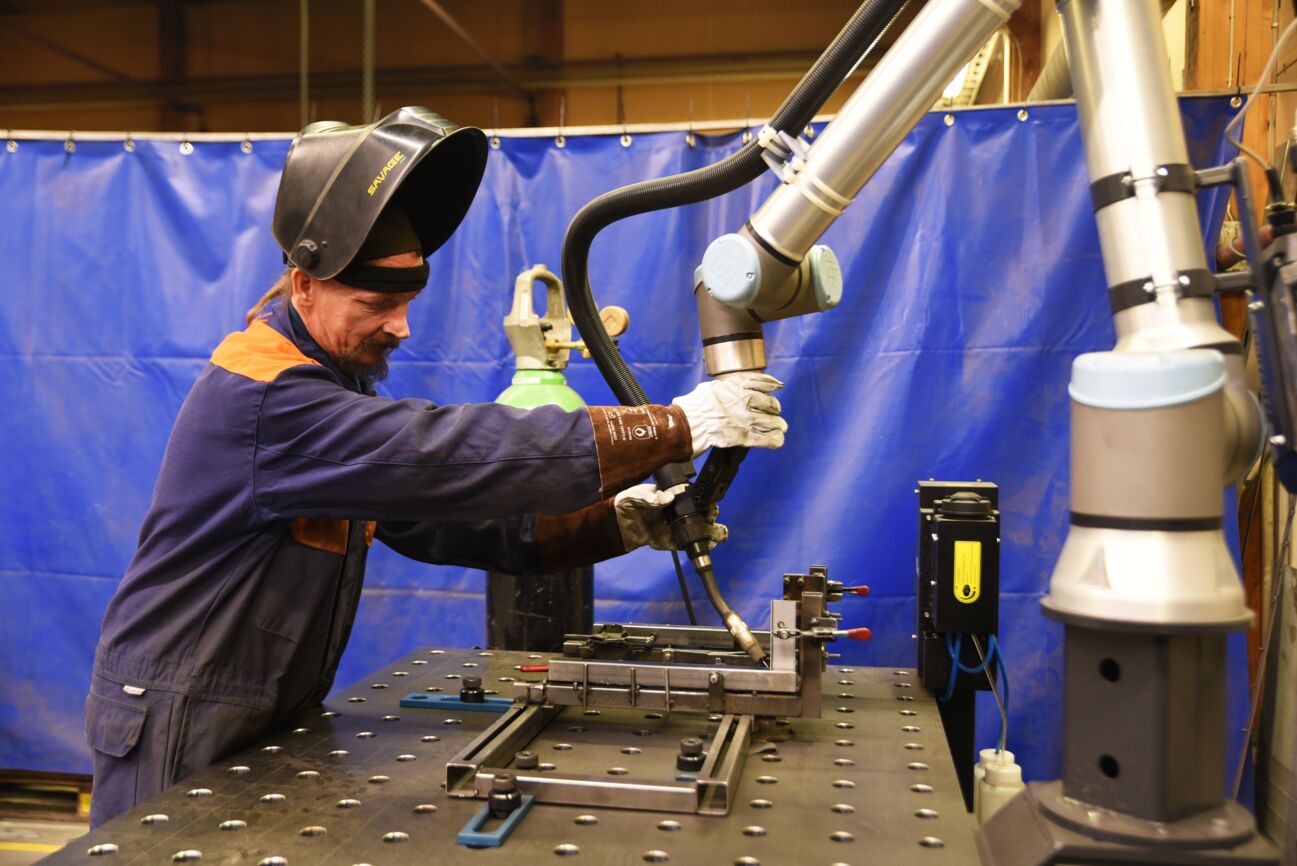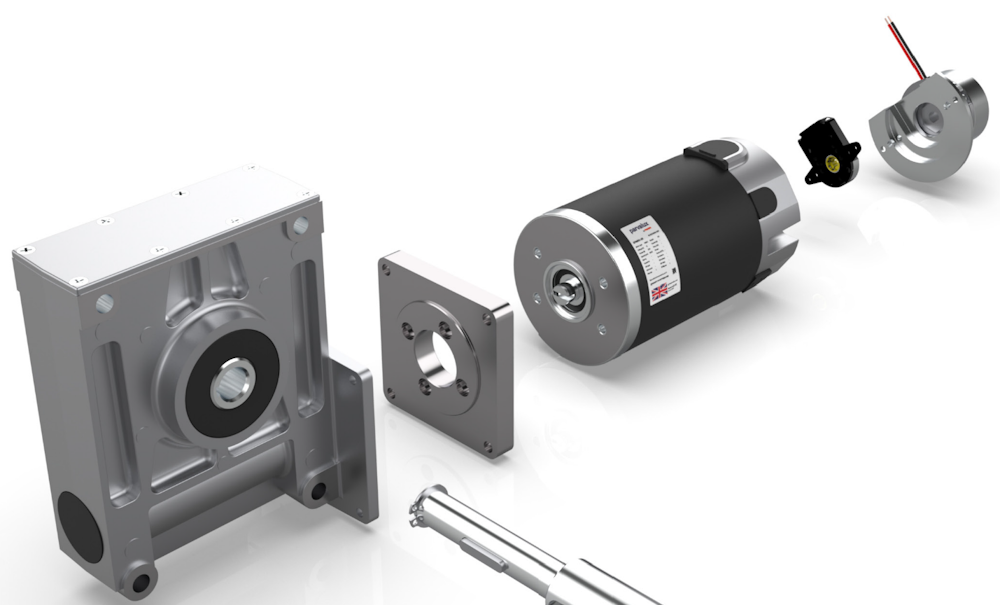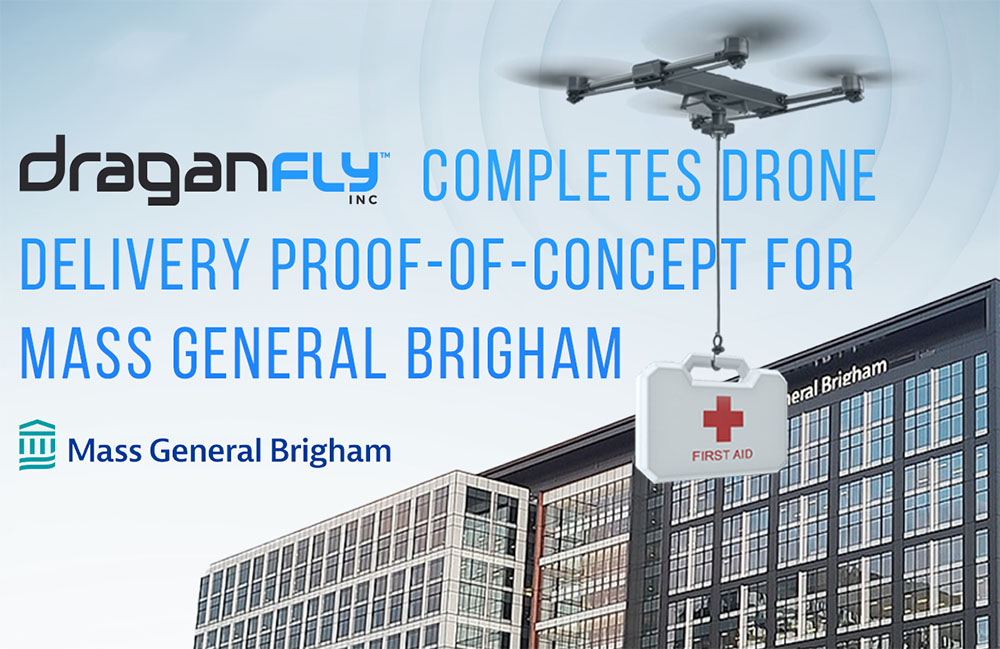Universal Robots provides cobots for applications including palletizing, welding, machine tending, assembly, dispensing, finishing, and material handling. | Source: Universal Robots
In 2017, only 2.8% of all newly installed industrial robots were collaborative robots or cobots, according to Stanford University’s “Artificial Intelligence Index Report 2023.” By 2021, that number had increased to 7.5%.
Robots working with humans to support a range of flexible applications has been a global trend. The cobot industry has grown as part of the digital transformation of the manufacturing industry.
Part of this growth can be attributed to ongoing workforce challenges in the North American manufacturing. Attracting and retaining workers, particularly skilled labor, has remained a primary business challenge since before the pandemic, reported the “2024 Talent Study” from Deloitte and the Manufacturing Institute.
Collaborative robots promise multiple benefits
While traditional industrial robots require complex installation and dedicated, restricted cells separated from workers, cobots offer many flexibility benefits, said industry analysts. These make them more attractive to manufacturing leaders looking to make smaller, more manageable investments in automation.
Some flexibility features of cobots include:
- User-friendly, no-code programming and control interfaces
- Built-in safety features that allow humans to work inside the robot envelope during operation
- Designed to be redeployable, such as being mounted on a cart and moved to different task areas
- Built-in force sensing, making certain tasks simpler without the need to configure third-party sensors
- As cobots typically don’t replace workers, cobots can have a positive effect on employees’ perception of automation and the changes automation may bring in the workplace
With so many benefits for flexible, bite-sized automation, cobots can be an ideal entry point to the world of automation for manufacturers addressing skills gap challenges, analysts said. They also offer a solution for highly automated, smart factories looking for the next value-add in niche applications such as screw assembly or buffing and grinding, they noted.
Latest cobot product announcements
1. Schneider Electric Lexium

The Lexium collaborative robot line debuted in March. | Source: Schneider Electric
Unveiled at MODEX 2024, the two new Lexium cobots offer payloads of 3 to 18 kg (6.6 to 39.6 lb.), with positioning accuracy of +/- 0.02 mm (+/- 0.00079 in.) and operating radius up to 1,073 mm (42.2 in.).
The robots use Schneider Electric’s EcoStruxure architecture, which connects smart devices, controls, software and services for collaborative data flow and shop-floor to top-floor machine control.
2. Doosan Robotics Prime-Series cobots

Doosan’s P-Series robots are its longest cobots yet. | Source: Doosan Robotics
The Doosan P-Series has a reach of 2,030 mm (79.9 in.) making the longest-reaching cobot available, claimed the company. The P-series has a payload of 30 kg (66.1 lb.). Doosan said it is primarily designed for palletizing applications.
Features of the P-Series robot include a built-in gravity-compensation mechanism that reduces power consumption in comparison with similar payload cobots, the company said. It is also inherent wrist-singularity free, and has five degrees of freedom, with the fourth axis removed and sixth axis speed increased to 360 degrees/second. The P-Series also includes PL (e) and Cat 4 safety ratings.
3. Kawasaki Robotics CL Series cobots

The CL Series cobot. | Source: Kawasaki Robotics
Kawasaki Robotics’ CL Series are powered with NEURA Robotics’ robot assistance technology and feature speed of 200°/s.
The cobots have repeatability of ± 0.02 mm with payloads and reaches of 3 kg/590 mm (6.6 lb./23.2 in.), 5 kg/800 mm (11 lb./31.4 in.), 8 kg/1,300 mm (17.6 lb./51.1 in.), and 10 kg/1,000 mm (22 lb./39.3 in.). They offer free mounting orientations, extremely small footprints and IP66 classification.
Applications for the CL Series robots include finishing, parcel sorting, and palletizing/depalletizing, said Kawasaki.
4. FANUC CRX-10ia/L Paint

FANUC’s 10ia/L cobot. | Source: FANUC
The latest addition to FANUC’s CRX line of cobots, the 10ia/L, has a payload of 10 kg (22 lb.) and a reach of 1,418 mm (55.8 in.). The company claimed that it is the first collaborative paint robot to comply with explosion-proof safety standards including IECEx, ATEX, U.S., Canada, Japan, Korea, China, Taiwan, and Brazil.
Meant for high-mix, low-volume paint applications, as well as for operators with little to no robotics experience. Its “easy-teach” features including drag-and-drop programming and lead-to-teach. (Imitation learning is a common feature for cobots.)
In addition to painting, the robot can also be deployed for powder and liquid coating applications, said FANUC.
5. Universal Robots UR30

UR’s UR30 cobot. | Source: Universal Robots
Universal Robots is a pioneer in collaborative robotics and continues to expand its product line with the UR30, offering a 30 kg (66.1 lb.) payload and 1,300 mm (51.1 in.) reach. The company said it designed the UR30 is smaller and more compact than comparable robots because of the importance of flexibility in cobot applications.
The UR30 is part of the Universal Robots’ growing portfolio of products, joining the UR3e, UR5e, UR10e, UR16 and UR20
6. Techman Robot TM30

The TM30 cobot is intended for palletizing and semiconductor manufacturing. | Source: Techman Robot
Techman Robot’s TM30 cobot has a payload of 35 kg (77.1 lb.) and a reach of 1,702 mm (67 in.). With this high reach-to-weight ratio, the TM30 is suitable for palletizing applications.
The company also noted that the TM30 is useful for the semiconductor back-end process, which typically includes manual labor for lifting and loading wafer boxes weighing up to 35 kg.
Techman has integrated proprietary AI vision technology into its robots. It also provides a series of add-on software tools for safety, incoming part positioning, barcode reading, dimension measurement, and visual inspection.
7. Delta D-Bot Series

Delta’s D-Bot series of cobots. | Souce: Delta
At Hanover Messe 2024, Delta Electronics Inc., a leader in power management and a provider of IoT-based smart green systems, announced a new line of six collaborative robots. Their payloads range from 6 to 30 kg (13.2 to 66.1 lb.), and their reach ranges from 800 to 1800 mm (31.4 to 70.8 in.).
These six-axis robots offer speeds up to 200 degrees per second and accuracy within ±0.02 mm. The new cobots offer “plug-and-play” installation and a user-friendly interface designed for non-technical personnel.
Applications include palletizing, pick and place, and welding, said the company.
What’s next for cobots?
Robotics-as-a-service (RaaS), which mimics the popular subscription model transforming the software and cloud service industries, should continue to grow as more small companies dive into automation.
Another key technology poised to affect industrial robotics is AI prompt engineering. As robot control software continues to trend away from code and toward user-friendly interfaces, the idea of prompting an AI to teach or program the robot to perform an operation is not far off.
No matter what the future holds, collaborative robots remain an option for manufacturers looking to automate dull, dirty, and dangerous tasks, without taking on a large traditional robotic automation project.
About the author
Isaac Maw is a proposal writer at D2L, a global learning innovation company helping organizations reshape the future of education and work. He was previously an editor at Engineering.com.
Editor’s note: This article was syndicated from The Robot Report sibling site Engineering.com.

 4 months ago
56
4 months ago
56










 English (US) ·
English (US) ·